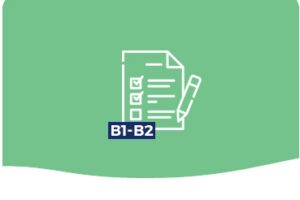


Todo el personal de FUNNY LEARNING ha sido formado para que el servicio que ofrecemos sea de la máxima calidad. Hemos apostado por la formación continua y específica de nuestros profesionales y por un sistema de auditorías internas que nos permiten detectar áreas de mejora CON UN ÚNICO OBJETIVO: LA EXCELENCIA EN LA ENSEÑANZA DE NUESTROS ALUMNOS.



¿No eres miembro todavía? Regístrate ahora
Are you a member? Login now
[et_pb_section fb_built=»1″ _builder_version=»3.22″ da_disable_devices=»off|off|off» da_is_popup=»off» da_exit_intent=»off» da_has_close=»on» da_alt_close=»off» da_dark_close=»off» da_not_modal=»on» da_is_singular=»off» da_with_loader=»off» da_has_shadow=»on»][et_pb_row _builder_version=»3.25″ background_size=»initial» background_position=»top_left» background_repeat=»repeat»][et_pb_column type=»4_4″ _builder_version=»3.25″ custom_padding=»|||» custom_padding__hover=»|||»][et_pb_text _builder_version=»4.4.7″ background_size=»initial» background_position=»top_left» background_repeat=»repeat»]
Comprueba tus respuestas con las soluciones:
1. Jane’s staying at home today. She’s ________too ill ________ to go to work.
2. I couldn’t believe I’d won the lottery. It was ___________too good __________ to be true.
3. Ben’s grown so quickly – his shoes aren’t __________big enough ___________ for him now.
4. I’m really busy. There aren’t __________enough hours _________ in the day.
5. I wish I had ____enough money_________ for that car. But I know I’ll never be _____rich enough_______ to buy one.
[/et_pb_text][/et_pb_column][/et_pb_row][/et_pb_section]
[et_pb_section fb_built=»1″ _builder_version=»4.3.2″][et_pb_row _builder_version=»4.3.2″][et_pb_column type=»4_4″ _builder_version=»4.3.2″][et_pb_text _builder_version=»4.3.2″]
Comprueba tus respuestas con las soluciones:
[/et_pb_text][/et_pb_column][/et_pb_row][/et_pb_section]
[et_pb_section fb_built=»1″ admin_label=»section» _builder_version=»3.0.47″][et_pb_row admin_label=»row» _builder_version=»3.0.48″ background_size=»initial» background_position=»top_left» background_repeat=»repeat»][et_pb_column type=»4_4″ _builder_version=»3.0.47″ parallax=»off» parallax_method=»on»][et_pb_text _builder_version=»3.19.12″]
Comprueba tus respuestas con las soluciones:
[/et_pb_text][/et_pb_column][/et_pb_row][/et_pb_section]
[et_pb_section fb_built=»1″ _builder_version=»3.0.47″][et_pb_row _builder_version=»3.0.48″ background_size=»initial» background_position=»top_left» background_repeat=»repeat»][et_pb_column type=»4_4″ _builder_version=»3.0.47″ parallax=»off» parallax_method=»on»][et_pb_text _builder_version=»3.19.12″ background_size=»initial» background_position=»top_left» background_repeat=»repeat»]
Funny Learning. Con el objetivo de incentivar las inscripciones y matriculaciones para el próximo curso 2019/2020, Funny Learning con domicilio social Calle de la Cruz 28 y NIF número 75019792 W promueve el sorteo de cinco pack de libros de inglés para el uso durante el curso, el cual se regirá por las presentes bases:
El plazo durante el cual se podrá participar en el Sorteo dará comienzo el 1 de mayo de 2019 a las 00:00 horas (hora peninsular española) y finalizará el 15 de junio de 2019 a las 23:59 horas (hora peninsular española), ambos inclusive. Las inscripciones de alumnos que sean posteriores a esta fecha no podrían entrar en la promoción.
La presente promoción será válida a nivel local, en Jaén (España) y provincia.
La participación en la presente promoción es gratuita y se articulará bajo la mecánica de Sorteo público.
Podrán participar en el sorteo todo aquel que formalice su matrícula con Funny Learning para el próximo curso 2019/2020. Entran en el sorteo los alumnos que se inscriban a las clases dirigidas por el Funny Learning tanto en colegios, institutos o centros propios, excluyendo las reservas de plaza de los cursos intensivos de Julio.
El sorteo tendrá lugar el próximo 17 de junio de 2019 y se realizará públicamente en redes sociales a través del nombre a través de una plataforma de selección aleatoria.
Se sortearán:
Dentro de los diez (10) días naturales siguientes los ganadores serán informados y obtendrán un cheque que podrá ser canjeado a principio del curso por los libros. Si no se lograra contactar con los Ganadores tras realizar tres (3) intentos, éste perderá automáticamente el derecho a obtener el Premio y el mismo se adjudicará al Suplente que ocupe el primer lugar en la lista, según el orden de extracción.
Existe la posibilidad de dar de baja o descalificar a usuarios que incumplan las reglas de la promoción o de penalizar en caso de que algún participante hubiera actuado de manera fraudulenta. Por ejemplo, no formalice su matrícula.
Funny Learning es el responsable de los datos gestionados al realizar la reserva de plaza. La finalidad es la participación en la promoción a través de la matricula en las clases para el próximo curso. Los datos que son recogidos del propio interesado son: nombre, apellidos, e-mail y teléfono y no se cederán a terceros salvo obligación legal. En cualquier momento el interesado puede consultar sus datos así como rectificar y suprimir sus datos.
Ante cualquier duda o problema puedes contactar con Funny Learning al:
Teléfono: 953 352 702
Móvil: 648 821 494
Correo: info@funnylearning.es
La participación en el Sorteo de libros de Funny Learning supone la aceptación íntegra de las presentes Bases Legales, así como la aceptación del criterio decisiones que se efectúe.
[/et_pb_text][/et_pb_column][/et_pb_row][/et_pb_section]